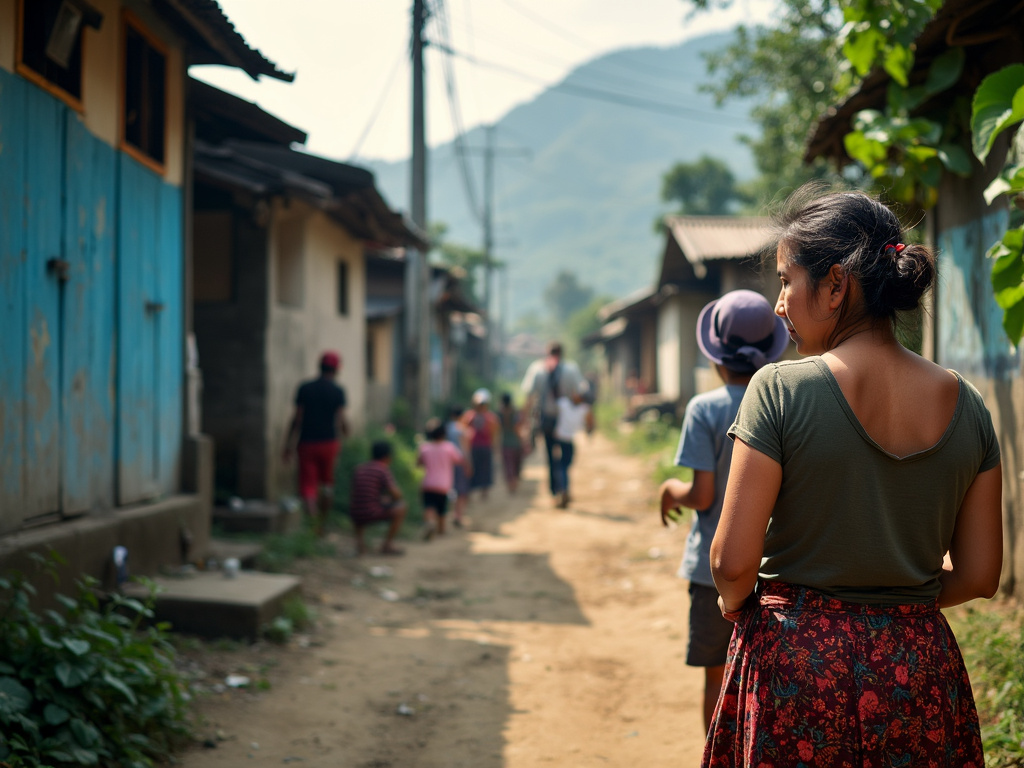In Northern Thailand, the scourge of human trafficking is intricately linked to the region’s persistent poverty. Families struggling to survive on limited resources often find themselves vulnerable to the false promises of traffickers who exploit their desperation. The Development and Education Program for Daughters and Communities (DEPDC) understands that to effectively combat trafficking, it is essential to address its root causes—particularly the economic hardships that leave individuals susceptible to exploitation.
Understanding the Connection Between Poverty and Trafficking
Poverty is a significant driver of human trafficking in Northern Thailand. In many rural areas, economic opportunities are scarce, and education is often inaccessible or undervalued. This lack of opportunity forces many families to make difficult decisions, sometimes leading them to send their children to work in distant cities or across borders in the hope of securing a better future. Unfortunately, these children are often trafficked and subjected to forced labor or sexual exploitation.
Traffickers prey on these vulnerable populations, offering jobs, education, or a better life, only to deliver them into a cycle of abuse and exploitation. The connection between poverty and trafficking is cyclical—trafficking exacerbates poverty by trapping individuals in situations where they cannot earn a fair wage or live freely, and poverty continues to feed the supply of vulnerable individuals into the trafficking industry.
DEPDC’s Holistic Approach to Breaking the Cycle
DEPDC recognizes that breaking the cycle of poverty and trafficking requires a comprehensive approach that addresses both immediate needs and long-term solutions. Their work focuses on providing education, economic opportunities, and community support to empower individuals and reduce their vulnerability to trafficking.
- Education as a Pathway Out of Poverty:
- DEPDC’s educational programs are designed to provide children with the knowledge and skills they need to escape the cycle of poverty. By ensuring access to quality education, DEPDC helps children develop the tools necessary to pursue legitimate employment opportunities, thereby reducing their risk of being trafficked.
- These programs include both formal and non-formal education, tailored to meet the needs of different age groups and communities. By offering flexible learning options, DEPDC reaches children who might otherwise be excluded from the traditional education system, such as those from ethnic minorities or migrant families.
- Vocational Training and Economic Empowerment:
- Vocational training is a key component of DEPDC’s strategy to combat trafficking. By providing practical skills training in areas such as agriculture, handicrafts, and technology, DEPDC empowers individuals to secure stable employment or start their own businesses.
- This economic empowerment not only lifts individuals and their families out of poverty but also strengthens the overall resilience of communities, making them less susceptible to the lure of traffickers. DEPDC’s focus on entrepreneurship training further encourages self-reliance and financial independence, essential elements in breaking the cycle of exploitation.
- Community-Based Prevention and Support:
- DEPDC works closely with local communities to raise awareness about the dangers of trafficking and the importance of economic empowerment. Through workshops, community meetings, and outreach programs, DEPDC engages with parents, teachers, and local leaders to foster a collective understanding of how poverty drives trafficking and what can be done to combat it.
- By building strong, informed communities, DEPDC helps to create a protective environment where individuals are less likely to fall prey to traffickers. This community-based approach also ensures that support systems are in place for those who are at risk or have been rescued from trafficking.
- Advocacy and Policy Influence:
- In addition to direct interventions, DEPDC advocates for policies that address the root causes of trafficking at a systemic level. This includes pushing for greater investment in rural development, education, and economic opportunities in Northern Thailand, as well as advocating for stronger legal protections for vulnerable populations.
- DEPDC’s work in policy advocacy helps to create a more supportive environment for anti-trafficking efforts and ensures that the needs of those most at risk are represented in national and regional development plans.
The Impact of DEPDC’s Work
The impact of DEPDC’s holistic approach can be seen in the lives of the individuals and communities they serve. Children who receive education through DEPDC’s programs are far less likely to be trafficked and more likely to secure stable employment as adults. Families who benefit from vocational training and economic support are better equipped to withstand financial hardships without resorting to desperate measures.
Moreover, the communities where DEPDC operates have become more resilient to trafficking, with increased awareness and stronger social networks that can identify and respond to potential threats. By addressing the root causes of trafficking, DEPDC is not only helping to protect the most vulnerable but also contributing to the long-term development and stability of Northern Thailand.
Moving Forward: The Need for Continued Support
While significant progress has been made, the fight against trafficking in Northern Thailand is far from over. Continued support for DEPDC’s programs is essential to sustain and expand their efforts. This includes funding for education and vocational training, support for community outreach initiatives, and backing for advocacy work aimed at systemic change.
Breaking the cycle of poverty and trafficking requires a sustained, collaborative effort. By supporting DEPDC, we can help ensure that vulnerable individuals in Northern Thailand have access to the opportunities and resources they need to build a better future, free from the threat of exploitation.
Conclusion
The intersection of poverty and trafficking in Northern Thailand presents a complex challenge, but DEPDC’s comprehensive approach offers a powerful model for addressing this issue. By focusing on education, economic empowerment, and community-based prevention, DEPDC is helping to break the cycle of vulnerability that leads to trafficking. With continued support, their work can continue to make a profound difference in the lives of those most at risk, paving the way for a safer, more equitable future for all.


